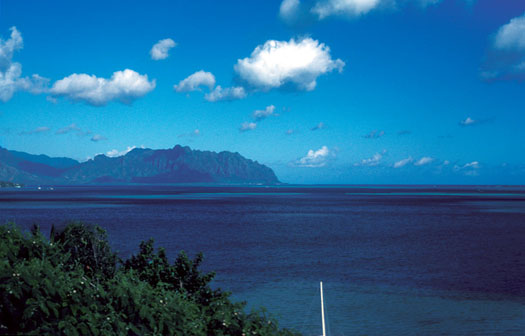
Although I occasionally did a biology project at the Hawaii Institute of Marine Biology at Coconut Island in Kaneohe Bay, I did not do much nudibranch counting in the bay. With hindsight, I regret that. Knowing what I know now, I'm sure some of the sandy and muddy areas, as well as algae beds, would have yielded many species I did not see diving in my other sites. Snorkeling around Coconut Island, I counted a few Hypselodoris imperialis, and from the mangroves in the island's boat harbor came the only specimen of Polybranchia jensenae I found in Hawaii. Also, most of the living Glaucus atlanticus I saw in Hawaii were from Waikane when I was house sitting for a college professor who had a house right on the beach. Below, we're looking across Kaneohe Bay to the northwest. Light patches are shallow reefs that are usually surrounded by lush coral growth. Or at least were in the late 1970s.

Here is a view in the same direction from a boat in the bay. The small point just off the end of the mountains is the island called Chinaman's Hat, shown in a closer shot from the other end of the bay in the following photo.
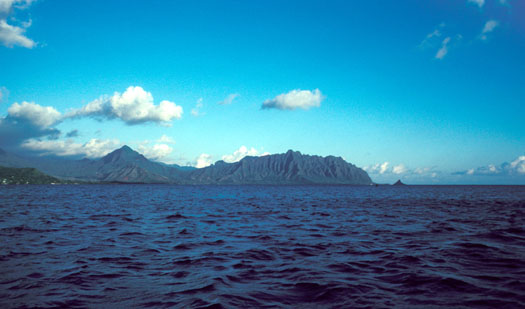
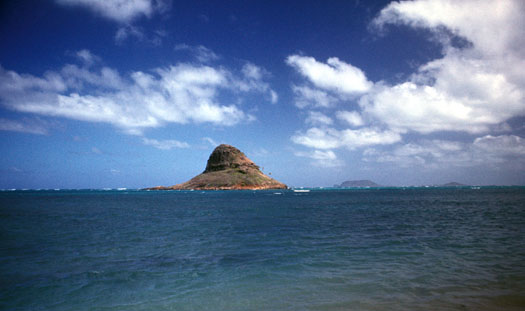
This is Coconut Island, the site of the Hawaii Institute of Marine Biology (HIMB). A ferry runs between the island and the pier at lower left. The southeastern edge of the bay is visible in the background at lower right, where the Kaneohe Marine Corps Air Station is located.
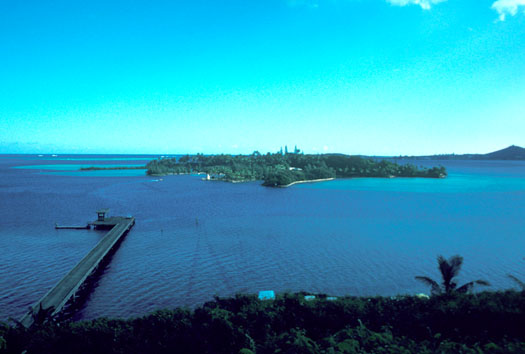
The shot below looks back towards the steep mountains on windward Oahu from the ferry that runs between Coconut Island and the mainland. A bit of Coconut is visible at right and the pier on the mainland side is toward the left side.
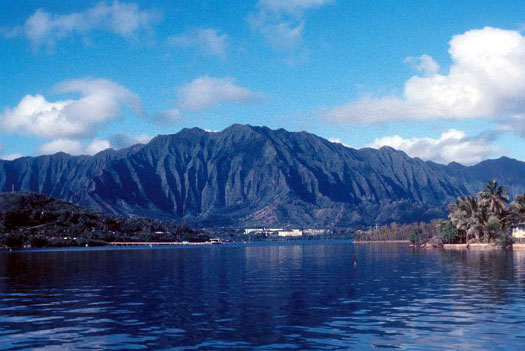
Below is the main lab building at HIMB. Or at least, this is how it looked back in December, 1970. I haven't been back there since about 1983.
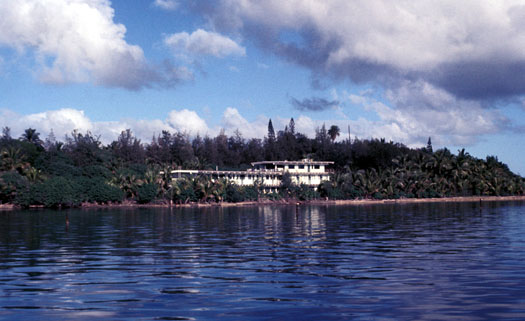
This was HIMB's harbor on Coconut Island from the same era.
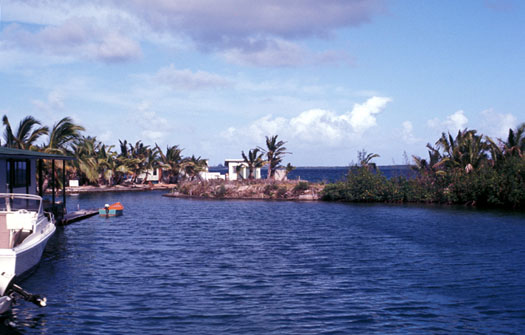
Close tab when finished.